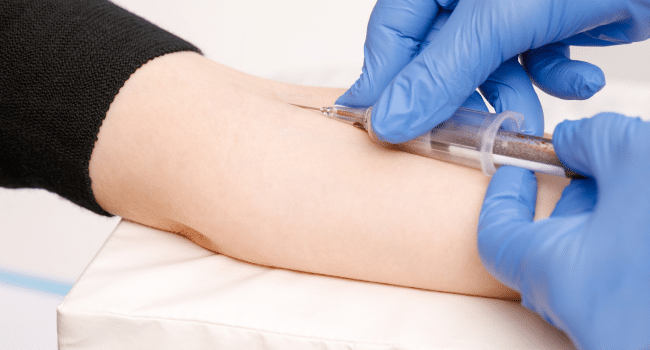Blood sample collection is crucial to determine the current health status of a person or determine whether or not they have been subjected to the disease. The first thing a patient does before taking any steps further is to give their blood sample, which is why the reports must be up to the mark so that the procedures also do not get affected.
Blood can be drawn with three main methods:
- Arterial Sampling: this method is generally practised in hospitals. It is used in the determination of metabolic, respiratory, and mixed acid-base diseases, where carbon dioxide levels require understanding and continuous monitoring. Even though this method is one of the safest procedures, it can be painful to the patient. However, it has side effects such as the high risk of bleeding for patients with bleeding disorders, known as coagulopathy. There can also be several potential contractions after taking this test.
- Venepuncture Sampling: this form of blood sample collection is less arduous than the other methods because the group takes place from a superficial vein in the upper limb, generally the median cubital vein; this vein is close to the skin and doesn’t have many large nerves positioned close by. Venipuncture can take place in a standard medical practitioner’s office as well, but although less hurtful, this method cannot be wholly relied on. It can lead to intermixing of samples, lack of hygiene, risk of storage, contamination of blood samples, among other problems.
- Fingerstick Sampling: This is the most accessible form of sampling. It involves taking just a drop of blood from the patient by lightly pricking the index finger of the patient and collecting it on or in a stick. Fingerstick sampling gets concluded within seconds, hence reduces the anxiety and pain of the patient. Most of the times, fingerstick sampling is used to determine diabetes. It is beneficial for the patient in the long term as well because this method results in a lack of blood loss. Fingerprick sampling can be easily performed anywhere, even at home.
Now that the three methods are explained, here are a few tips one should keep in mind before choosing a blood sample collection centre:
- Hygiene: The hospital or medical clinic that you shall go to should be hygienic and clean. This means that the environment should be healthy and sanitized. The syringes or fingersticks should be used only once per patient. The cotton used to wipe the blood should be well sanitized. They should have the availability of appropriate supplies and equipment.
- Attentiveness: Unsafe phlebotomy can cause long-time complications for the patient such as blood loss, lack of haemoglobin or bruises. The hospital or the clinic should be responsible for venepuncture efficiently so that it does not lead to anatomical structure damage or abnormality or damage the nerves due to careless needle entry. The workers should be trained correctly in phlebotomy.
- Accurate Reporting: the staff should be experienced enough to be able to analyze the blood sample and make its report accurately. Each criterion should be specified, and the numerical count should be perfect.
- Should Be Available At Home: It is always preferable by the patient that the blood test is done at their house because it is convenient. If the patient is not in the condition to move, then the medical centre should be able to provide services like haemoglobin tests at home. The staff should be cooperative and have equipment which can be carried easily for the home sample blood collection.
- Quality Of Laboratory Sampling: as discussed earlier, the knowledge of the staff regarding the sample collection plays a significant role. But as presented by the World Health Organization, the criteria for the appropriate quality of sampling include- the proper use of sterile gauze and needles, patient sample labeling, analyzing of patient reports, transportation conditions when it comes to home sample collection, using recommended laboratory tubes during lab work and the appropriate anatomical insertion site for venepuncture.
Hence, these were a few tips one should follow and keep in mind before choosing a blood sampling collection centre for any form of sampling technique. This is because unsafe phlebotomy can cause long term damage and being precautionary and taking measures for medical procedures is crucial.
Read More on KulFiy
